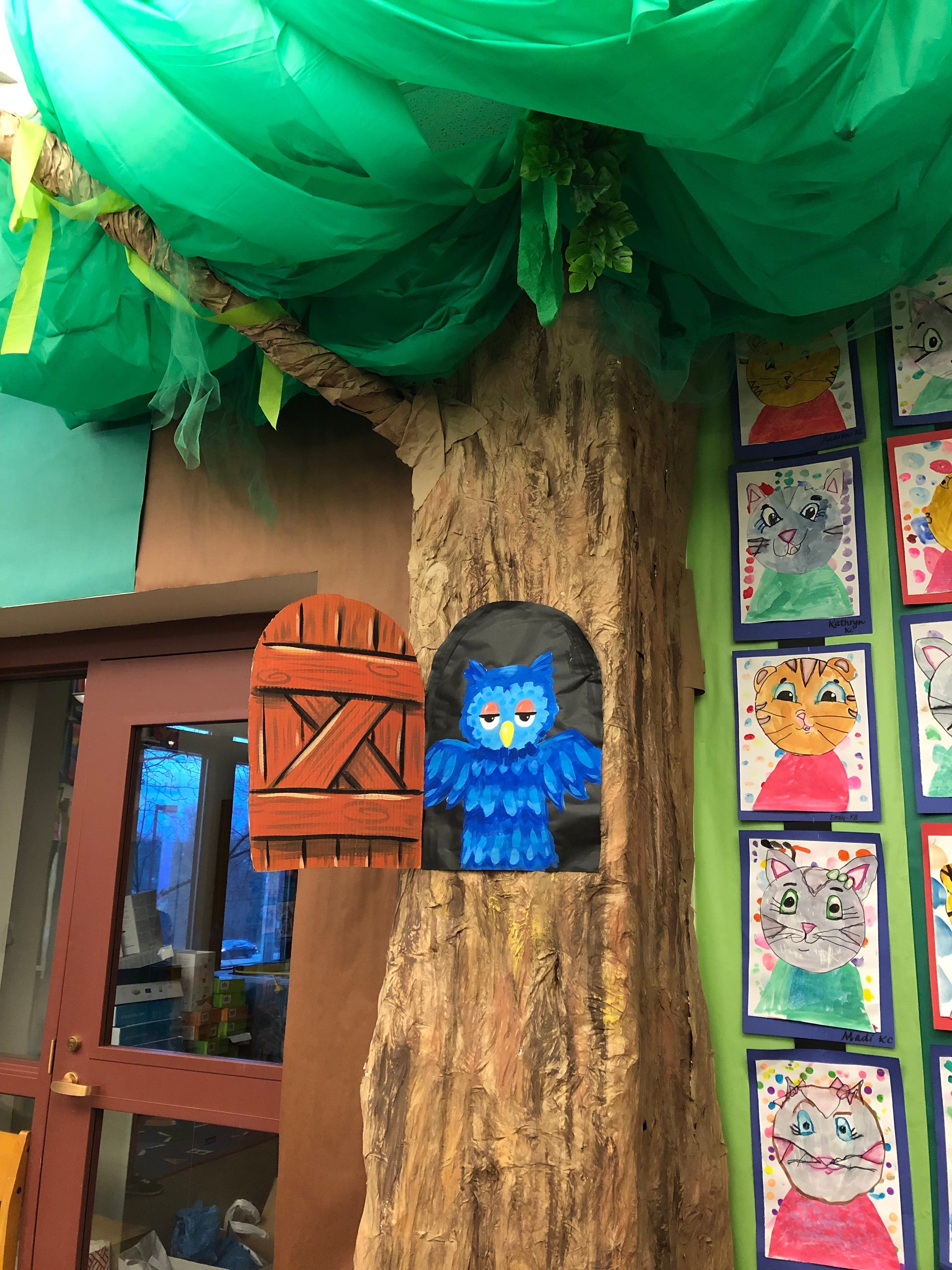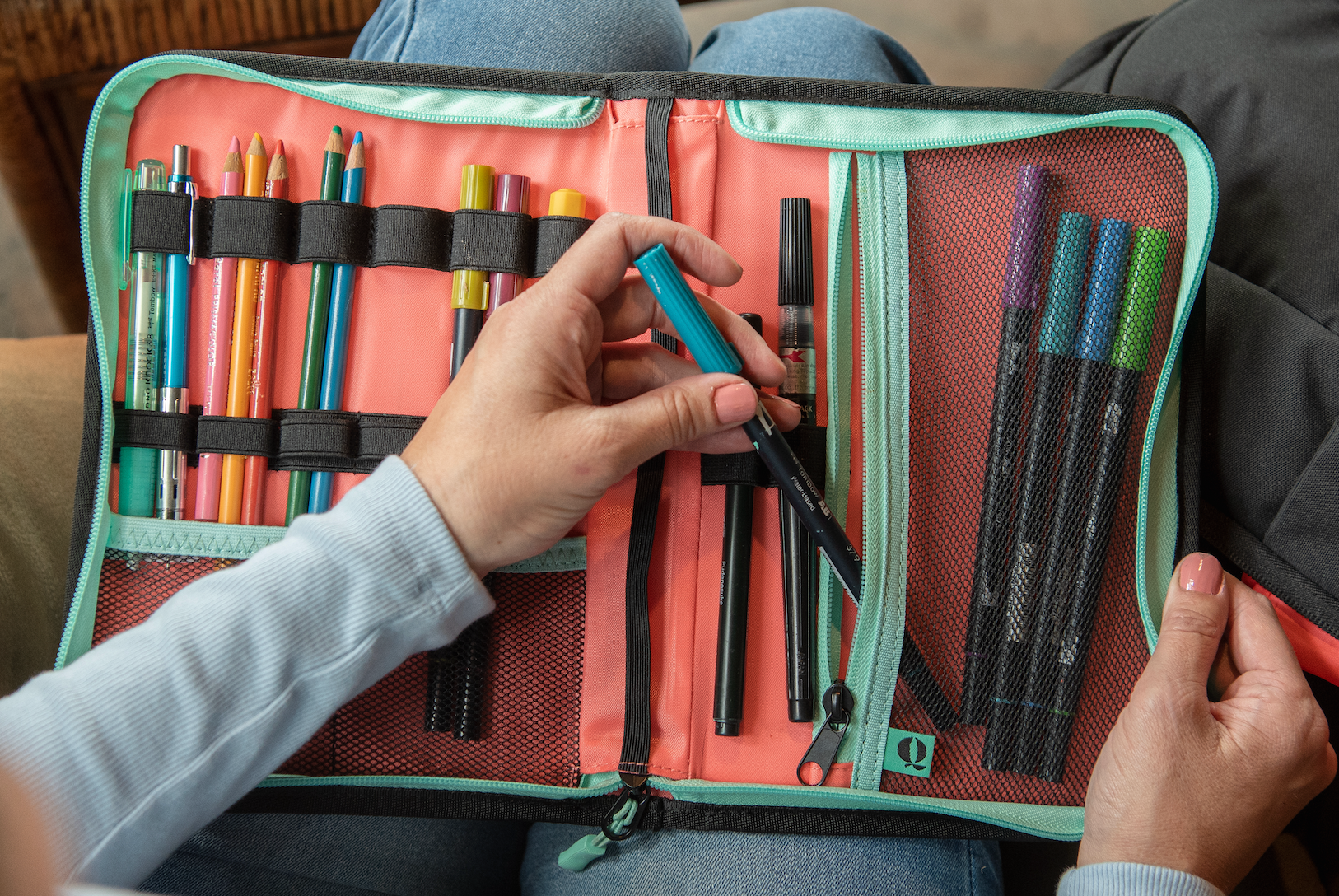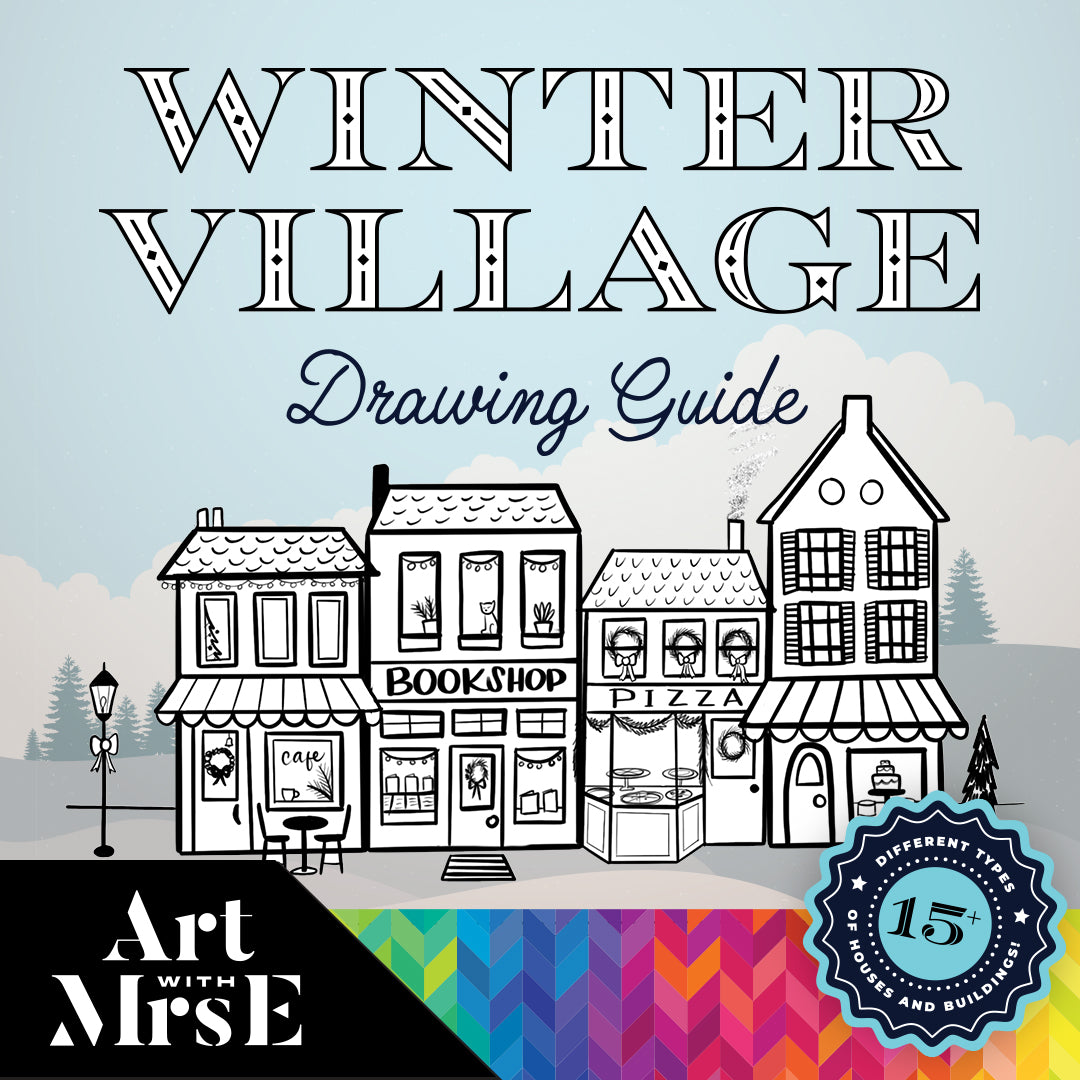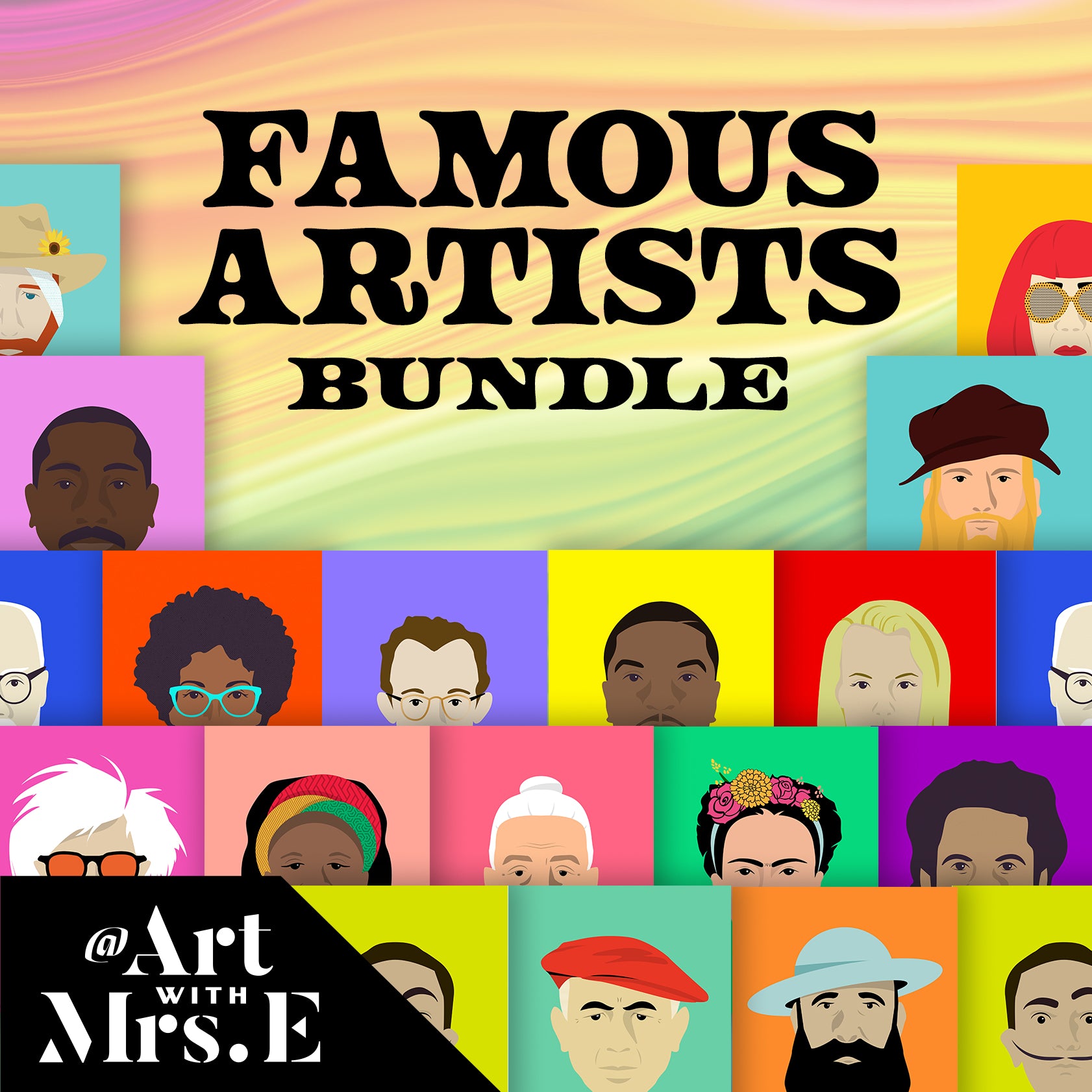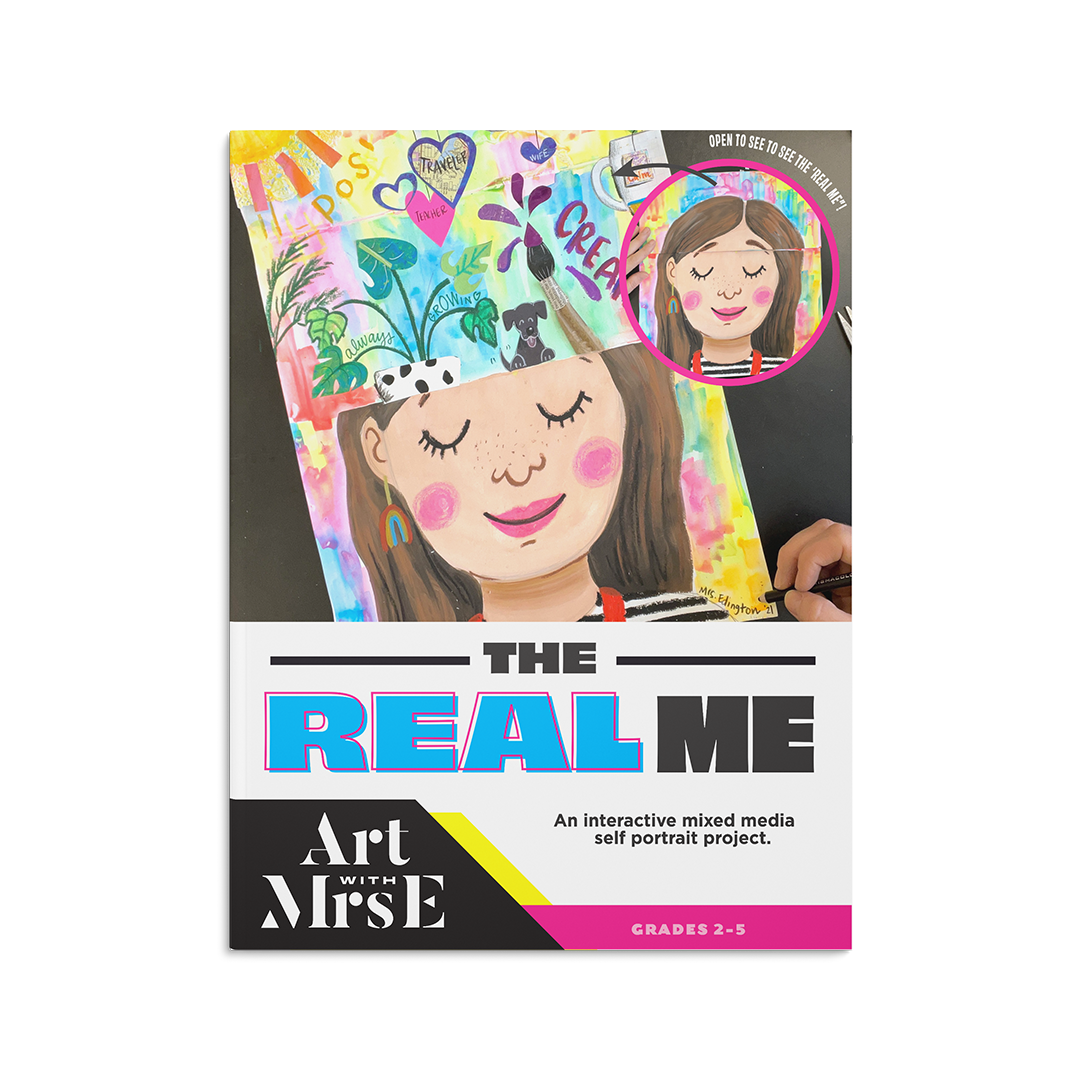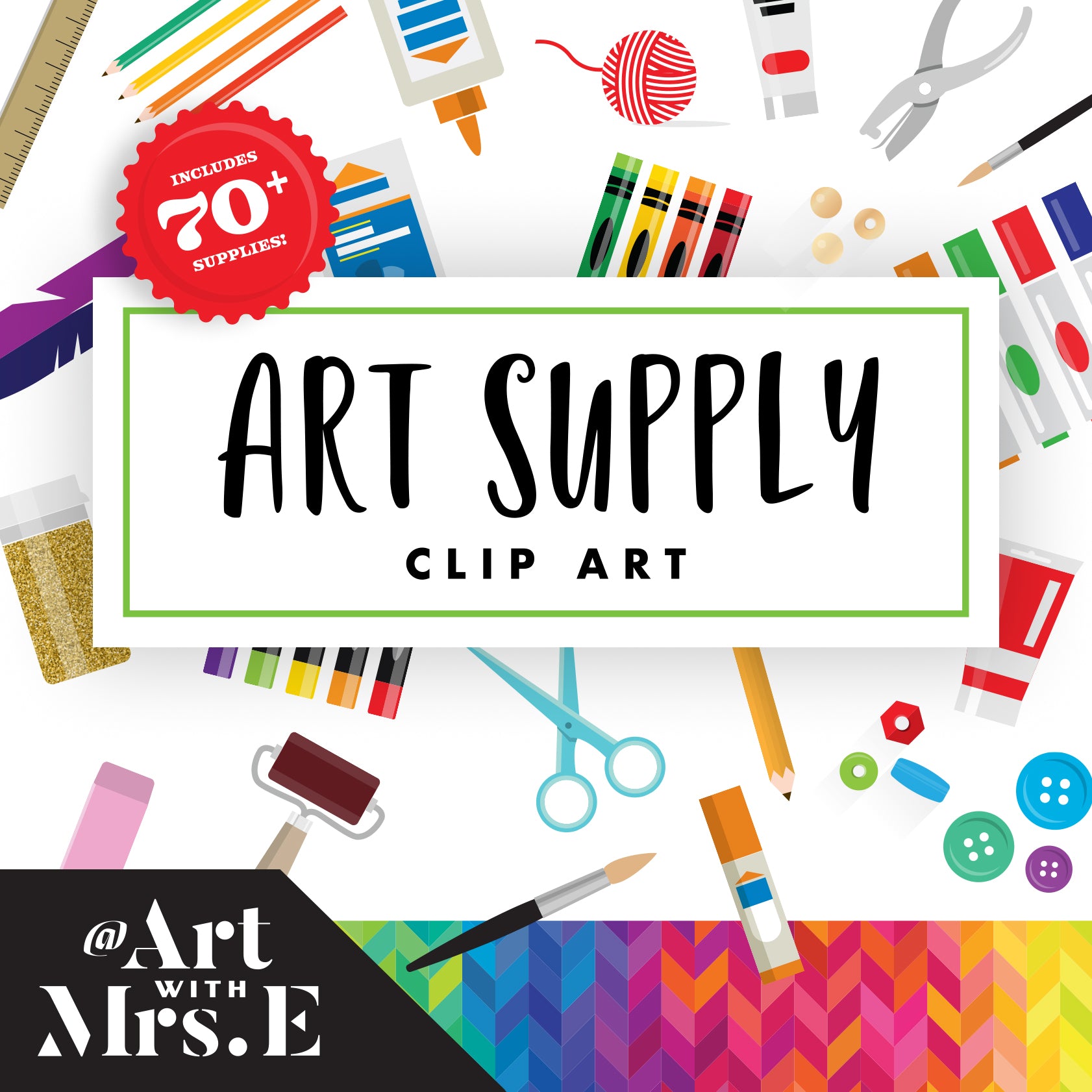Blog
Face Painting Tips for Beginners
Face painting can be a fun and rewarding skill to pick up, whether for classroom rewards, birthday parties, or community events. These five beginner-friendly tips will help you get started with confidence, from choosing simple designs to managing eager kids in line!
Learn more10 Reasons Why You Should Share Your Personal Art with Your Students as an Art Teacher
As an art teacher, one of the most impactful things you can do is share your personal artwork with your students. This not only inspires them but also demonstrates your credibility and passion for art. By showcasing your unique creations, you provide real-life examples of artistic techniques and growth. Your students will see firsthand the dedication and skill involved in creating art, which can motivate them to invest more deeply in their own artistic journeys. Learn how sharing your personal art can transform your teaching approach and inspire your students to reach new heights in their creativity.
Learn more5 Unexpected Pieces of Advice for New Art Teachers: Lessons from a Veteran Art Teacher
Discover five essential pieces of advice for new art teachers from my 15 years of experience teaching elementary art. Learn how to slow down, set boundaries, and collaborate with colleagues to create a supportive and inspiring art education environment. Embrace these tips to enhance your teaching journey and let your creativity shine.
Learn moreHow to Respectfully say No to Excessive Requests as an Art Teacher
Art teachers often face numerous miscellaneous requests that can overwhelm their schedules. Learn effective and respectful ways to say no, maintain boundaries, and focus on your primary teaching responsibilities with our guide on how art teachers can manage extra requests in schools.
Learn moreWindow Painting 101: How to Paint Festive Windows at School or Home
One of my favorite ways to spread holiday cheer throughout my school community has been to paint the windows. Painting the windows in your classroom, front office, library, wherever is such an amazing way to make a BIG impact with just a little time and paint. This is also a fun way to involve your students in a community based art project (if the imagery is simple enough!) Today I want to share all I know about window painting, share my process, as well as answer some of the questions I have received over the years when it comes to painting windows. So let's go! How to Paint Windows for the Holidays: In this blog, we'll guide you through the creative process of painting your windows, adding a personalized touch to your surroundings that captures the magic of the holidays. Gather Your Supplies: Before diving into your holiday masterpiece, gather the necessary supplies. You can honestly use many different times of paint/ markers to decorate the windows. I prefer to use tempera paint as it just washed right off! I love Crayola Premier paint. However, you can also use water based acrylic paint, paint pens, or chalk markers! Choose a color palette that perhaps compliments the surrounding area/ decor, or you can keep is classic and simple and just use all white! Sketch/ Gather Inspiration For Your Design: Start by sketching your design on paper to visualize how it will look on your windows. It would be just something real quick to help you with layout, and then you can reference other imagery while you work. You could consider more classic holiday imagery like snowflakes, ornaments, or festive landscape. You could also choose to paint some of the iconic holiday characters around this time of year- I have loved painting My favorite imagery has been painting a winter village. It's festive yet not specifically Christmas. I recently painted the windows at my local library and opted to paint a woodland creatures winter scene, as they had expressed they would like the leave the windows up throughout the winter, not just December. Here is a step by step tutorial for painting your own winter burrow scene from a recent blog post. You can find a link to my drawing guide for winter village drawing guide here, as well as my woodland creatures guide here. Prepare the Windows: If your windows are notably dirty, it would probably be a good idea to clean them before painting! You also might want to lay down a drop cloth, or just a poster board along the window ledge to catch any paint drips. Get Painting: With your design in mind and your windows prepped, it's time to bring your vision to life. If you want to begin with the end in mind- and would like to use a scraper to take the window paint off, you can add a pump or two of dishsoap to the paint for easy clean up! Now, just keep in mind, the more soap you add, the thinner/ more diluted your tempera paint will be. If you would like paint that is more opaque, then just use the tempera paint as it is. Gather a mixture of brushes to vary line thickness. I like having a few brushes of each size/ shape. I mostly end up using flat brushes to paint windows. I use large + medium flat brushes for painting in larger areas, and medium + smaller round brushes for smaller details. Once you get painting you will discover what brushes work best for you! * A few other things to note about the painting process: * If you are planning on making your windows visible from both sides of the window, you need to consider your process. If you use only one color (like the white for the winter village) you will be fine! Everything will be drawn in a monoline and perfect from all sides of the window. However, if you are painting a character or scene with more colors and wish to have a black outline, you will need to start with the black outline of your scene first. Typically when we paint, we block in shapes first and then add the black details on top so they are visible- but if you would like your windows to be viewed on both sides, you will need to: 1. Paint the black outline first. 2. Paint in the colors of the shapes as if you are working on a coloring book page. Meaning- do not paint over the black outlines, as this will move/ smudge the black paint and mix it into your colors. Only paint in the negative spaces in and around the black outline.Then, once evetything is painted in, you can add a bit more black on top to clean up/ darken your black outlines. Just be sure to wait for the paint to dry so it doesn't move/ you don't pick the paint back up. If you are going to blend colors, you will need to blend as you paint, and while the paint is wet! Once you let tempera paint dry on the window, if you try to paint over it, it will be darker, look splotchy and not look as clean as if it were all painted in one layer. Try to avoid layering as much as possible on windows, unless you are using acrylic paint and don't plan on making your windows viewable from both sides. Here is an artist, Lindsey Morales who paints windows for the season on business's windows. She uses interior acrylic house paint and paints a base layer of white first and then builds up her painting like she would on a canvas or mural- but note: her paintings aren't viewable from the inside of the building, as all you would see is the white base layer. 5. Share the Joy: Your painted windows are sure to bring smiles to those passing by. Share the joy with your community by taking photos and sharing them through your newsletter or social media. You can consider organizing a window-painting event with your students to make it a shared experience. There is no better feeling than knowing you are spreading joy for other's to enjoy- what a special feeling you can share with your students. 6. Clean-Up and Removal: When the holiday season comes to an end, remove the window paint using a damp cloth or window cleaner. Washable window paint is designed to come off easily, leaving your windows clean and ready for the next creative endeavor. If you used soap in your tempera paint you can use a large paint scraper to scrape the paint off the windows. You can also use a paint scraper to take to acrylic paint off, you just have to spray the paint with water first to loosen the paint. Here is the window scraper I recommend! Painting your windows for the holidays is a wonderful way to express your creativity, spread festive cheer, and bring a touch of magic to your surroundings. Whether you're creating a winter wonderland or a scene straight from your imagination, let your holiday spirit shine through your painted windows to spread joy and love to others! Happy Creating!
Learn moreUnlocking the Power of Arts Integration: Fueling Creativity and Learning
Discover how arts integration transforms education, enriching the academic experience and boosting creativity. Explore the myriad benefits of infusing art into traditional subjects, from enhancing academic performance to fostering emotional intelligence. Unleash the potential of your students as they paint a brighter, more colorful path to knowledge through art-inspired learning.
Learn moreDiverse Famous Artist Posters for the Art Room
If you're looking for a way to add color, creativity and rich art history into your art room, then I have the perfect visuals for you. Meet the Famous Artists Poster series, perfect to bring art history to life for art students of all ages. Your art room is about to become a living canvas as we showcase the work of some of the most celebrated artists in history, spanning various eras and genres. From the timeless beauty of Leonardo Da Vinci's Renaissance masterpieces to the bold, contemporary expressions of Jean-Michel Basquiat, we've curated a selection that's as diverse as it is inspiring.
Learn moreHow to Make DIY Sketchbooks in the Elementary Art Room
Learn how to make easy DIY sketchbooks for elementary students using budget-friendly materials! Perfect for art teachers, parents, and homeschoolers, this guide offers simple binding techniques to create personalized sketchbooks that inspire creativity in the classroom or at home.
Learn more10 Effective Ways to Foster Genuine Connections with Your Art Students At the Start of The Year
Discover 10 practical strategies to establish authentic connections with your art students at the start of the school year. From showing genuine interest in their interests and hobbies to creating and fostering a supportive environment, this blog offers valuable insights for art educators seeking a way to further connect with their students.
Learn moreHow to Make Student Art Portfolios
DIY Student Art Portfolios Welcome to one of my favorite days to end of the school year. This is not only a day where you can finally pass back alllllll the student art from the year (def enlist your student helpers) but your students will work totally independently on their portfolio while you do. Not only will these big ole portfolios will safely transport home all of the gorgeous art your students have made, but having your kiddos create an end of the year portfolio is the perfect opportunity to recognize, and chat about all of the growth your students have made in their artistic practice. Creating portfolios also teaches students how to take more ownership and care of their work, and allows them to transport and store their artwork from the year in a safe place at home where they can refer back to their work and their growth for years to come. Not to mention is it super fun for them to personalize! Here is How to Make a DIY Student Portfolio: 1. Fold 18 x 24 Manila / tag board paper in half (i just literally order the cheapest biggest paper I can find) 2. Staple 3 x on each side (or just one side depending on how big the art going home is) I usually walk around the room while my students are already decorating their portfolios and staple the sides as they work. That way I don't feel like I have millions of things to prep ahead of time, and I often use their good work habits to my advantage by saying things like "Ok, I'm coming around and stapling the portfolios of the tables that are working the hardest and quietest". BAM. Amazing work habits from my kiddos and I am able to float around, staple and observe. 3. Teach students how to draw their name in bubble letters (and shading their name if they want to). There is just something so empowering about learning how to draw your name in bubble letters, wouldn't you agree? And if you show them how to add shading or highlights? Whewwwww hold onto your hat! They are just BEAMING with pride when they finally "get it"! I have an easy to use "How to Draw Bubble Letters" drawing guide available here that my students just love. 4. Have Students write the year we were in art together (2022- 2023) so that they can easily identify what year they made their artwork. 5. Allow students to draw and customize their portfolios! This can seem tricky because often times when we tell students to draw whatever they want, many struggle with exactly WHAT to draw. So times I will give my students a prompt like "Draw what you are most excited about this summer" Or "Draw what your favorite part of 4th grade was". But you can also give them total freedom! I rarely allowed my students to have "free draw time" so many really enjoyed the freedom. If students wanted a bit more guidance, I always make all of my Drawing Guides available. There is something about watching my students teach themselves how to draw a specific image on their own that really helps build their confidence. It's like I'm teaching them, but from a distance. Sometimes I will put out a few of my more popular guides out on the tables for anyone who needs them, or leave them out on a counter for kiddos to come up and just grab what they need. Totally up to you! You can find my bundle of Drawing Guides available here! 6. If the portfolio paper you are using is thick, have students trace any pencil lines in either black sharpie markers (we love using huge chisel chip markers for this) OR- if your portfolio paper is too thin, just have them draw in a black washable marker. Otherwise, the sharpie marker may bleed through the paper and worse, onto the students' art if there is already artwork inside. I love using Crayola Construction paper crayons to color with because we typically use colored tag board or manilla paper and the construction paper crayons just pop so vibrantly! 6. While students are busy decorating their portfolios myself and some student helpers (either the students who are early finishers or my star students) help pass back allllllll their work! The kiddos working just open their portfolio, slide in their work and keep decorating their portfolios. It’s a win/win! If you haven't had your students transport their artwork home in an end of the year portfolio I highly recommend you give it a try! It reinforces the importance of their work (that you should care how safely your art gets home), teaches them how to recognize and celebrate their improvement over the year, and adds importance to their creations by sending them home in such a thoughtful manner.
Learn moreSimple Portrait Back-to-School Bulletin Board
Here is one the many Back-to-school bulletin boards I created inspired by the students at my school! Looking for a great way to fill those empty bulletin boards at the start of the year? Well, huge shout out to @mslevyteachesart and @amyteachesart (their Instagrams linked) for this idea! These awesome teachers used my Simple self-portrait drawing guide to draw larger-than-life children to display on their bulletin boards! When I made my own displays around my school, I actually went ahead and drew illustrations based on real students at my school, and few caught on by saying “Don’t you think that drawing kind of looks like me?” :) Just using white bulletin board paper I sketched out the children in pencil first, then traced the lines using a bingo dauber filled with India ink (a Cassie Stephens hack) After drawing about 25 diverse children I cut them out and arranged them on about 5 different boards around the school. I added a quote to some of them, others just had the children. It should also be noted that the omission of color was an artistic choice based on aesthetics. A great bonus to this display was once I had enough student art to hang, I left two kids as end caps on each board as another way to kind of frame their work. You can see how adorable my second graders’ “The Real Me” lessons look hanging near my illustrations (lesson linked!) Thanks again to two amazing teachers for this idea, my students and staff loved them! To download my Simple Self Portrait Guide that I used in this blog, you can Click Here! Happy Back-To-School season! Above is me “Simple Self Portrait Guide” that I referenced for the bulletin boards. I sketched the kids largely in pencil first then traced in India ink and a chisel tip Sharpie. Here you can see how they add a nice detail around student art! One of the bulletin boards around the school. There were 5 in total!
Learn more10 Eye Catching Teaching Visuals for the Art Room!
1 million years ago (ok, actually 14) when I walked into my first art room there was absolutely nothing in it. Other than tables and chairs, there were no supplies, no white board, no decor. Nada. I had taken a job at a brand new beautiful school which certainly had it’s perks (clean, brand new, not having to inherit a hoarder art teacher’s mess) but also came at the realization that every single thing in the room needed to come from me. Back when I first started teaching there was no Teachers Pay Teachers or really anywhere I could go for classroom decor…. So, I had to make it. Yes, everything! Peep this picture of my classroom and some of the first visuals I made when I first started teaching. This was the year that I made my first “Blabber brush” as I called it, hand drew a color wheel, and created my line direction friends to hang out in the front of my room. Over the course of the next few years, I continued to hand draw nearly everything in my classroom until I began to digitally convert them upon opening my TPT store in 2018. Now, so many years later, I couldn’t be more thrilled with the bright, bold, modern yet kid-friendly art visuals that I have in my room. The best thing about these visuals is not only are they decor, but they are educational tools that my students reference all year long! Double bonus! Here are my absolute favorite eye-catching visuals: The Elements and Principles of Art These Elements and Principles of Art were created in collaboration with my husband who is a super talented graphic designer and can always make my visions a reality when I don’t have the tools myself! We were so PUMPED about these. One of my favorite things about them is they are simplified in the amount of information on the poster, but dynamic in their design to visually illustrate what each element and principle means. I personally don’t prefer text-heavy visuals, I would rather my students see visuals that are short, sweet and relevant to them. 2. The Color Wheel I mentioned earlier that my first year teaching I didn’t even have a color wheel in my art room, so I had to make one myself. So now being able to provide myself and other art teachers with a beautiful, modern color wheel feels like such a huge victory. Not only do I love the appearance of this color wheel but I also love the download comes with smaller color wheels that you can print out, laminate and provide for individual student use. This color wheel and others can be found here. 3. No Drama Llama Ok, I don’t exactly know why… but my students absolutely LOVE this “No Drama Llama”. They think he is the funniest, sassiest little dude and they love referring to him. I originally drew him up as just a funny little classroom expectations reminder but now he’s 100% part of our classroom family! You can download him here. 4. Friendly Reminder Frida In case you can’t tell, I’m really into word bubbles in my art room. I love adding extra personality to my visuals as a way to further connect with my students. I drew up this cute little cartoon Frida Kahlo as a way to remind students of different things around the room. Whether it’s to reminder to get in a straight line, or sanitize your hands on the way out the door. It just seemed like a fun way to gently remind my students vs me blabbering away at them. Frida comes with a few word bubble options as well as a blank template, but I also bought whiteboard contact paper that I cut into a word bubble which makes it super easy to update her when I need to! She can be downloaded here. 5. Art Supply Labels I know these labels don’t really fall under “decor” but they are CRUCIAL in the art room! Not only do I use these supply labels to organize my supply room but I use them for caddy organization for supplies my students use on a daily basis on their tables. These are super helpful to have in the room when there is a substitute, and also great for ESL students or students with special needs who need a picture for visual literacy. I also love using these labels digitally in my presentations to tell students about what supplies they will need for the day’s project. I also have just the clip art available for download here. These labels and clip art was HUGE during remote learning throughout the pandemic. 6. Famous Artists Posters I’m in love, I’m in love and I don’t care who knows it! These are 100% my favorite visuals in the art room. Hands down. Over the years I have had so many different famous artist posters in my classroom but not only were they unappealing to reference (full of tiny text that students would never be able to read from a far distance) but it felt like there was NO diversity in the artists provided. I was so sick of only seeing “dead white guys” being deemed as “famous artists” that I knew we had to make our own if I wanted to see a change in artists being represented. In this Famous Artist Bundle, we currently have 24 artists and growing that represent diverse races, genders, ethnicities, etc. Not to mention that many of these artists are alive and working currently. My number one goal with these visuals was to be able to have my students look at this wall and see someone they could identify with. Not to mention they are bright, colorful, modern and make such a statement when you see them hanging in my room. Plus, the BEST part about these artists is my students automatically turn around to look at the wall every single time I introduce a new project and artist. They use these visuals all the time! You can grab the bundle here or find them separated by volumes 1-4 in my TPT shop. 7. 3 P’s Classroom Expectations This poster is one of my favorites because it’s short, sweet and positive. Laying out clear expectations for my students is really important to me so this poster is one of the first things they see as they enter my room. It’s pretty self explanatory and makes an impact. You can grab it here. 8. Painting Visuals Ok, this actually a 2 in 1. Teaching proper paintbrush care is incredibly important to me so let’s just say I have quite a few visuals that provide "gentle” reminders to my students about my expectations when handling painting supplies. This Paint Brush Care poster was created many many years ago by hand as a way to help my students be more mindful of the care of the bristles of the paintbrushes. I am a big fan of personification so making these brushes kind of come alive was a blast. My students get such a tickle when they compare my slick and smooth bristled paintbrush to the “BAD HAIR DAY” paintbrush. I greatly depend on my “Dip Wipe Swipe” poster when teaching my young students how to paint with watercolors. Nothing would drive me crazier than the * tap tap tapping* of paintbrushes on the rim of the water cup. I wanted to come up with a catchy slogan to remind them to wipe their brush on the lip of the cup vs. tap. You can find both of these visuals in my TPT shop! 9. “Every Child is an Artist” Poster A staple quote and visual in my art room. I have always loved this quote by Picasso so why not make it so all students know that they are each an artist whether they realize it or not. Above you will see a large bulletin board display in my art room but we also created a poster with a similar aesthetic below available for download here. 10. Blabber Brush If you remember from earlier in this post I shared a photo of my original “Blabber Brush”. This was my art teacher solution to monitoring the noise level in the classroom. I have this visual hanging on my front board near my rules and procedures. On each color, I have a small piece of velcro and the corresponding piece on the paintbrush. I then place the paintbrush on the color/ noise level I would like to keep them on while they work. Many times they work on red- but this is not a bad thing at all! This is simply when I need my students to be quietly focused on their own work, or as I also say “how real art studios sound”. This visual has been a life saver and has carried me through over a decade of teaching! To download your own, click here! I hope that these visuals help spark some ideas for you as you set up your art room. If you’re looking to purchase the visuals I shared above you can find them all and much MORE in my Classroom Decor Growing Bundle in my Teachers Pay Teachers shop. Have fun and best of luck this school year!
Learn more